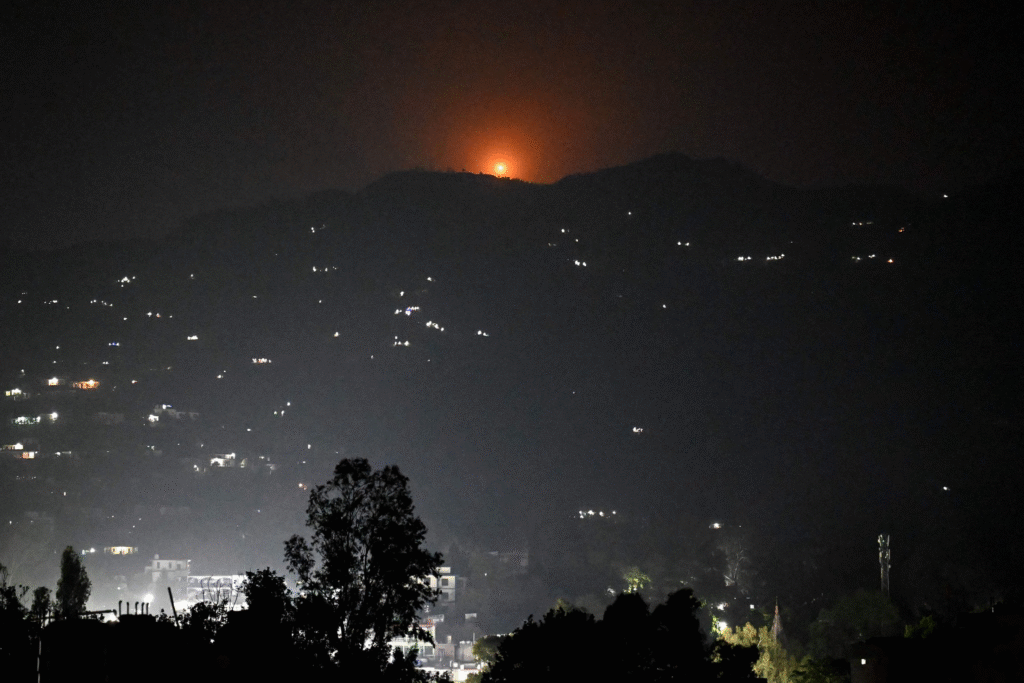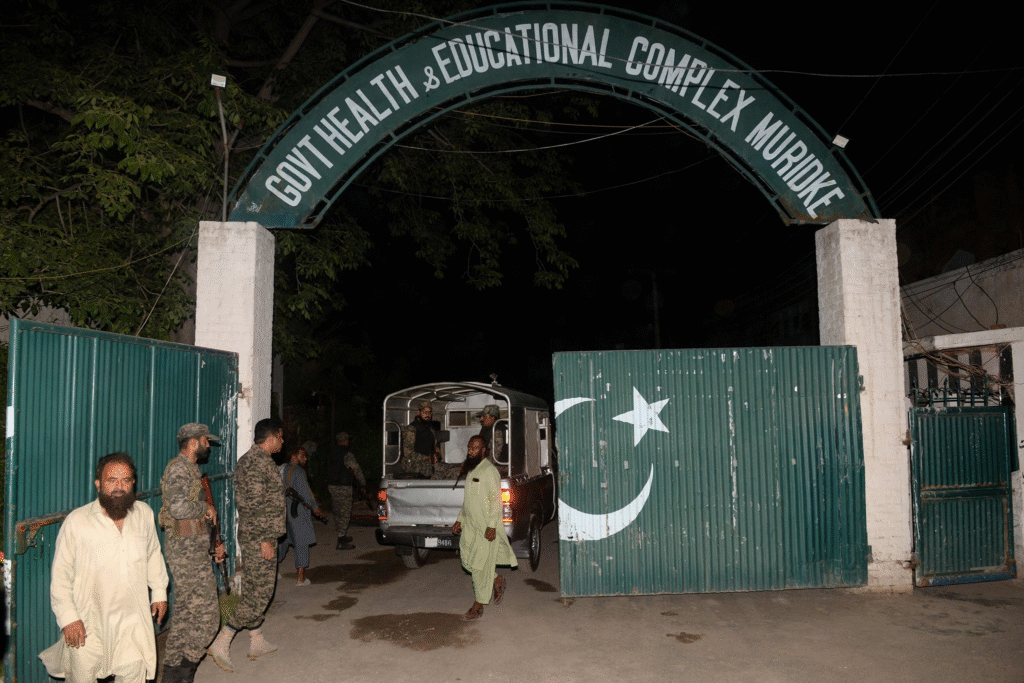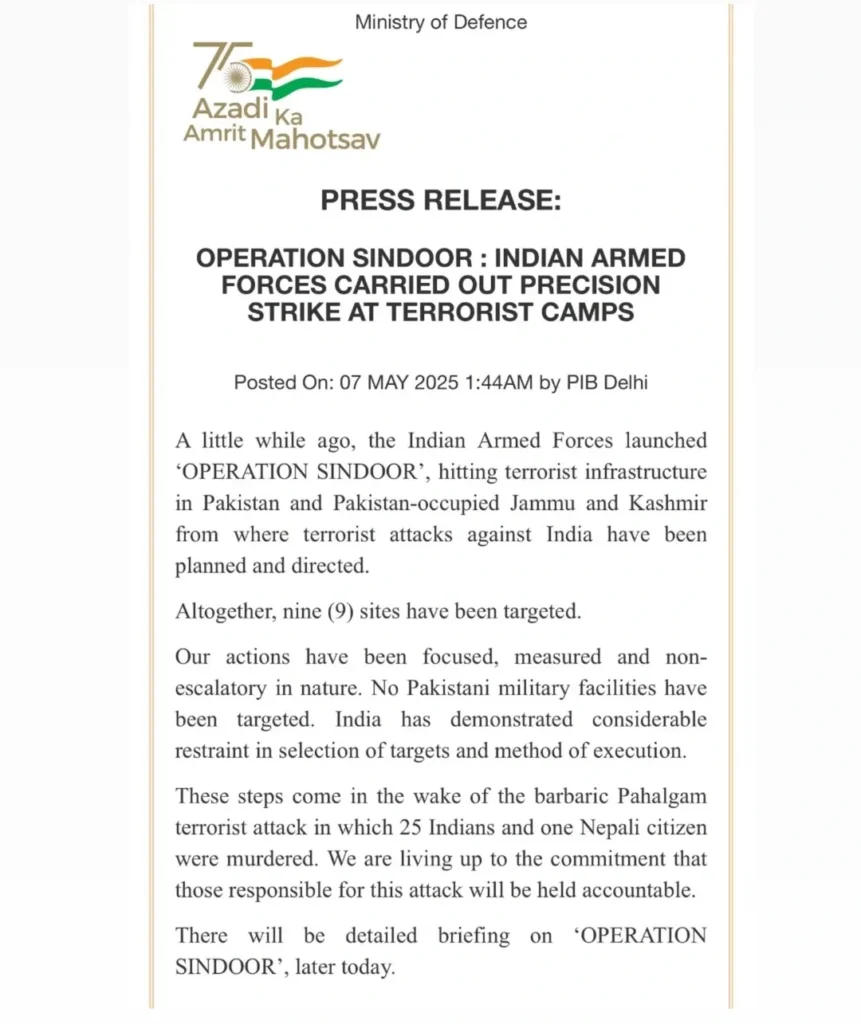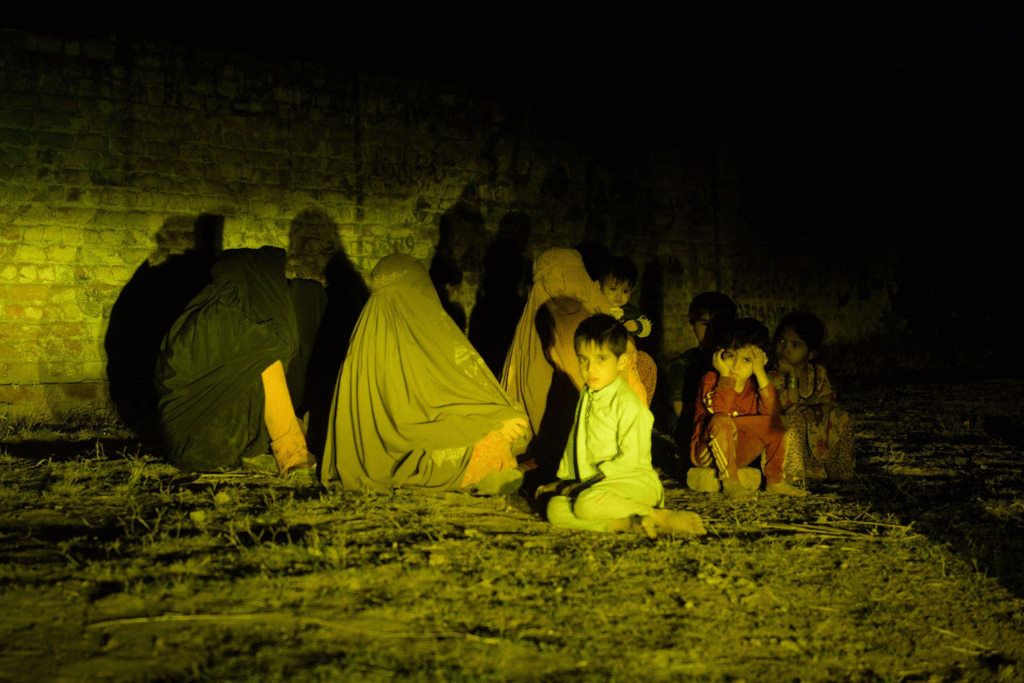India Pakistan War: How It Happened Why and What’s Next
Background of the Conflict
India and Pakistan, both nuclear-armed neighbors, have a long history of tension, primarily over the disputed region of Kashmir.

India Pakistan War: How It Happened Why and What’s Next
The two countries have fought multiple wars and numerous skirmishes since their partition in 1947. Kashmir, claimed by both nations, has been a flashpoint, with militant attacks often escalating tensions.
On April 22, 2025, a deadly attack in Pahalgam, Jammu and Kashmir, killed 26 people, mostly Indian tourists, and one Nepali citizen. India blamed Pakistan-based militant groups, specifically Jaish-e-Mohammed and Lashkar-e-Taiba, for the attack. Pakistan denied involvement, calling for an independent investigation.
The Pahalgam attack sparked widespread anger in India, putting pressure on Prime Minister Narendra Modi’s government to retaliate. Since the attack, both sides have exchanged gunfire along the Line of Control (LoC), the de facto border in Kashmir, raising fears of escalation.
The roots of this conflict trace back decades, with India accusing Pakistan of harboring terrorists who launch attacks across the border.
Previous incidents, like the 2016 Uri attack and the 2019 Pulwama bombing, led to Indian retaliatory strikes, including surgical strikes and airstrikes on terror camps in Pakistan.
The 2025 Pahalgam attack, described as the deadliest on Indian civilians in over a decade, intensified calls for a strong response. India’s government faced growing public and strategic pressure to act decisively to deter future attacks.
When and Where the Attack Happened
On May 7, 2025, at approximately 1:44 AM, India launched a military operation named “Operation Sindoor” targeting nine sites in Pakistan and Pakistan-administered Kashmir. The strikes hit locations including Muridke and Bahawalpur in Pakistan’s Punjab province, and Muzaffarabad and Kotli in Pakistan-administered Kashmir.

These areas are known strongholds of militant groups like Jaish-e-Mohammed and Lashkar-e-Taiba, according to Indian officials. Loud explosions were reported in these regions, with residents and media witnessing damage to buildings, including a mosque in Bahawalpur. The operation marked the first Indian strikes inside Pakistan’s territory since 2019.
The Indian armed forces, including the Army, Navy, and Air Force, conducted the operation as a joint effort. The strikes were launched from Indian airspace, using precision-guided missiles and loitering munitions. Indian forces targeted what they described as “terrorist infrastructure” used to plan attacks against India. The operation was a direct response to the Pahalgam attack, with India aiming to neutralize militant bases.
India’s Official Announcement and Statements
India’s Ministry of Defence announced the strikes early on May 7, 2025, stating, “A little while ago, the Indian Armed Forces launched ‘Operation Sindoor’, hitting terrorist infrastructure in Pakistan and Pakistan-occupied Jammu and Kashmir from where terrorist attacks against India have been planned and directed.”

The ministry emphasized that the strikes were “focused, measured, and non-escalatory,” targeting only militant sites and avoiding Pakistani civilian, economic, or military facilities. The statement added, “India has demonstrated considerable restraint in selection of targets and method of execution. We are living up to the commitment that those responsible for this attack will be held accountable.”
The Indian Army posted on X, saying, “Justice is Served. Jai Hind!” Defence Minister Rajnath Singh wrote, “Bharat Mata Ki Jai,” signaling national pride. Indian National Security Adviser Ajit Doval briefed U.S. Secretary of State Marco Rubio, emphasizing the precision of the strikes.
India’s embassy in the U.S. reiterated that “no Pakistani civilian, economic, or military targets have been hit.” Prime Minister Modi, who had vowed to punish those behind the Pahalgam attack, framed the operation as a necessary response to terrorism. Sources indicated that this was “Phase 1” of India’s response, suggesting potential further actions depending on Pakistan’s retaliation.
Details of the Attack and Casualties
India’s military used advanced precision strike weapons, including missiles and loitering munitions, in a coordinated tri-services operation. The strikes targeted nine terrorist sites, with coordinates provided by intelligence agencies.
Indian forces remained in their airspace, avoiding direct incursions into Pakistan. Pakistan’s military reported 24 impacts across six locations, including civilian areas like mosques and residential zones. Pakistan claimed eight civilians, including a three-year-old child, were killed, with 35 others injured and two missing. India reported three civilians killed in retaliatory shelling by Pakistani troops along the LoC in Indian-administered Kashmir.
Pakistan’s defense minister, Khawaja Asif, denied that the targets were terrorist camps, claiming civilian areas were hit. He invited international media to visit the sites to verify Pakistan’s claims.
Pakistan also reported shooting down five Indian aircraft, including three Rafale jets, one Sukhoi SU-30, and one MiG-29, along with a drone, though India has not confirmed these losses. The strikes disrupted civilian life, with several airlines, including IndiGo, Air India, and Qatar Airways, canceling flights due to airspace closures in parts of India and Pakistan.
Pakistan’s Response and International Reactions
Pakistan condemned the strikes as an “act of war” and vowed a “robust response.” Prime Minister Shehbaz Sharif called the attacks “cowardly” and said, “Pakistan has every right to respond decisively to this unprovoked Indian attack—a resolute response is already underway.” Pakistan’s military engaged in retaliatory shelling along the LoC, killing three Indian civilians. Information Minister Attaullah Tarar claimed Pakistan shot down three Indian jets and a drone, describing India’s actions as “blind aggression.” Pakistan’s foreign ministry warned that the strikes threatened commercial air traffic and brought the two nations closer to conflict.
The international community urged restraint. U.S. President Donald Trump called the situation “a shame” and hoped it would “end quickly.” Secretary of State Marco Rubio echoed this, saying he was monitoring developments and engaging both nations for a peaceful resolution.
The United Nations, through Secretary-General António Guterres, expressed concern over the military operations and called for “maximum restraint” to avoid a broader conflict.
The United Arab Emirates also urged de-escalation. The UK Foreign Office advised against travel near the India-Pakistan border, while countries like Russia, Saudi Arabia, and Britain were briefed by Indian officials. Despite these calls, analysts warned that Pakistan’s promised retaliation and India’s indication of further phases could escalate the situation.
Outlook and Continuation
The conflict shows signs of continuing, with both sides exchanging fire along the LoC and Pakistan promising retaliation. Indian sources suggested that Operation Sindoor is the first phase of a broader response, with further actions depending on Pakistan’s moves.

The severity of India’s strikes, compared to past operations, and Pakistan’s reported losses raise the risk of escalation. Analysts noted that the nuclear capabilities of both nations make de-escalation critical. The international community’s diplomatic efforts, led by the U.S. and UN, aim to prevent a full-scale war, but the situation remains tense. India’s planned nationwide drills to prepare for potential retaliatory attacks signal ongoing alertness. The closure of schools and airports in border regions reflects the gravity of the crisis.
The coming days will be crucial in determining whether the conflict escalates or cools down.

